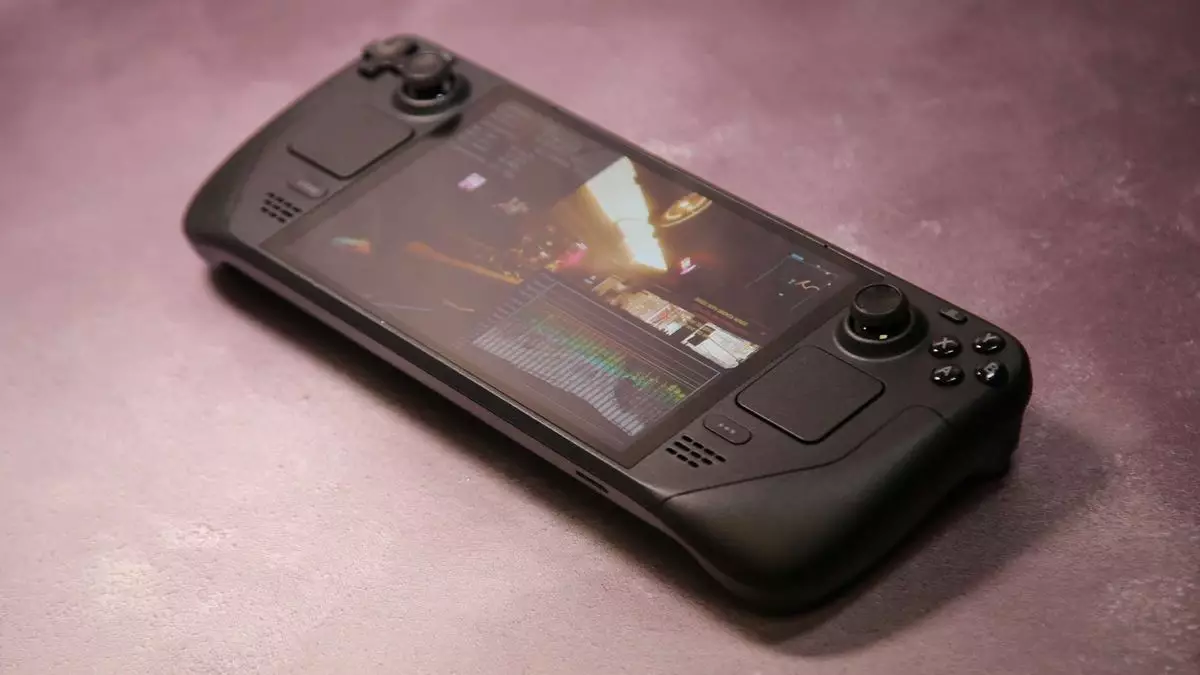As we reflect on Valve’s monumental “Year in Review” for 2024, it’s clear that the gaming industry is in the midst of an exciting evolution, particularly accentuated by the success of the Steam Deck. With players dedicating a staggering 330 million hours to gameplay on this handheld device—a phenomenal 64% increase from the previous year—it’s evident that Valve has successfully carved out a significant niche in the portable gaming market. Many enthusiasts speculate that a substantial portion of this gaming time was consumed by titles like Balatro, yet regardless of the precise figures, the implications of this growth are undeniably significant.
Valve’s gaming ethos has clearly resonated with a dedicated player base. The increase in gaming hours not only signifies heightened consumer engagement but also foreshadows the maturation of portable gaming, wherein devices like the Steam Deck will increasingly attract attention from major publishers. Notably, Square Enix’s announcement regarding Final Fantasy 7 Rebirth’s compatibility with the Steam Deck, coupled with Ubisoft’s confirmation of Assassin’s Creed Shadows for the platform, signals an industry shift: publishers are beginning to recognize the potential of this innovative handheld market.
Rising High: Publishers Acknowledge the PC Handheld Market
This newfound attention from influential developers represents an exciting pivot for the gaming landscape. It appears that the Steam Deck is not merely a fad or niche device but is indeed establishing itself as a crucial player in the realm of gaming hardware. The burgeoning interest from major publishers signifies a belief in the potential of PC handhelds to thrive alongside traditional consoles and PCs.
Further cementing this observation, Valve’s celebration of imminent SteamOS releases on third-party devices, such as the Lenovo Go S, indicates a broader strategy aimed at capturing diverse segments of the market. The prospect of building a gaming experience powered by SteamOS across a wider array of platforms can only amplify excitement. This strategy lays the groundwork for a future where gaming becomes increasingly accessible, catering to players seeking both versatility and power in their handheld devices.
SteamOS: A Game-Changer for Handhelds
One of the most exhilarating advancements is Valve’s ambitions for SteamOS, its gaming-focused operating system. By fostering a platform that can be installed on various handhelds—such as the ROG Ally X or the latest MSI Claw—Valve is channeling its resources into cultivating a robust gaming ecosystem that encourages innovation and competition. The versatility of SteamOS not only appeals to seasoned gamers but also opens up the world of PC gaming to newcomers who may have previously felt alienated from the segment.
Moreover, Valve’s assertion that “the future of hardware is bright” resonates even more compellingly when considering the extensive investments made in areas such as UI, Linux compatibility, and battery efficiency over the past ten years. This multi-faceted approach positions them uniquely to navigate the evolving gaming landscape, where players increasingly demand seamless experiences across devices.
A Bright Horizon for Game Development
What’s particularly fascinating is that these developments will undoubtedly benefit game developers as well. The investments made by Valve serve to ensure that any PC game, regardless of its audience, can leverage the advancements in hardware and software that SteamOS offers. With more developers keen to adapt their titles for this expanding ecosystem, the symbiotic relationship between hardware and software stands to flourish.
As the lines between handheld, living room, and PC gaming continue to blur, Valve’s strategy positions it at the forefront of this transformation. The potential for consumers to craft their own SteamOS living room PCs signifies an empowering shift where customization becomes paramount. This flexibility allows players to create a gaming atmosphere tailored to their needs, further deepening engagement and investment in this vibrant community.
Ultimately, it’s challenging to adopt a pessimistic outlook on Valve’s current trajectory. The momentum behind the Steam Deck, the increasing willingness of major publishers to engage, and the innovative potential of SteamOS all suggest a bright future for Valve and the gaming industry as a whole. While we may not see the arrival of Steam Deck 2 just yet or a renewed focus on Steam Machines in the living room, the groundwork being laid today will define the gaming experiences of tomorrow. The era of portable gaming has truly arrived, and Valve is leading the charge through innovation and adaptability.

